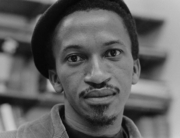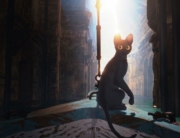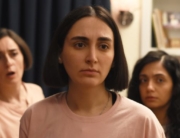Early on in Sebastián Silva’s small, strange, and perfect movie Crystal Fairy, Michael Cera’s character, Jamie, a relentlessly grating and sadly familiar American abroad in Chile, finds himself alone in a bathroom at a crowded party, staring at a toilet that refuses to flush something down. It’s a signal of Silva’s intentions that he actually shows the object in question, swirling around in the weakly spinning water, a stubborn, gross, and weirdly sympathetic reminder of Jamie’s humanity. (You have to wonder how that particular prop was wrangled.)
This is tricky territory, as the presence of a bodily product onscreen usually means that a number of orifice-related jokes from frat boys is about to follow, but Silva knows very well what he’s doing, and when Jamie emerges from the same bathroom again a few minutes later, you find yourself briefly pondering how the original situation was resolved. When a director can make you feel suspense regarding the status of offal, you know you’re in good hands.
This is also some of the finest work that Michael Cera has ever done. He gets under his own and the audience’s skin in deconstructing the self-indulgent charm that has rendered him the target of both accolades and ire. His Jamie acts like you hope Americans abroad won’t, using the Chilean environs as an excuse for the self-centered pursuit of sensation that trivializes his friends and adopted country in one fell swoop.
The sensation in question is the San Pedro cactus, a supposedly traditional hallucinogen only found in northern Chile. He makes the journey northward along with three friends played by Silva’s three younger brothers, all of whom are kind, charismatic, and eminently relatable. The oldest of them has consented to a friendship with Jamie out of generosity of spirit, or maybe charity, and for the first portion of their road trip through the stunning scenery, the four of them achieve an uneasy, amusing equilibrium.
That tentative stability is disrupted by the arrival of Crystal Fairy (Gabby Hoffmann), a hippy-dippy American chick with a wild mane of hair who Jamie drunkenly invited at the party the night before. She intrudes into their world like a loopy female god. Together, the five of them proceed on their journey. For a short while, the burden of being the odd man out shifts from Jamie to Crystal, and the group dynamic plays out more or less as expected. But she’s so openly warm and strange (their first night together, she shows no hesitation about embarking on a conversation with the four boys while fully nude) that she preempts the status of scapegoat and complicates things in endlessly fascinating and funny ways.
It’s hard to say which of them are better: Hoffmann (wild), Cera (unnerving), or the three Silva brothers (endlessly likable), all together a group whose constantly shifting relations to one another subvert any of the types you might have expected them to fit into. They are a small and beautiful microcosm of humanity, too intricate and particular to ever find an easy solution to a problem. Once they acquire the cactus and arrive at the intended beach, each of them has time to let their strangeness unfurl, alone and with each other, and it’s a pleasure to watch it happen.
Silva reveals the facets of his characters in small narrative threads that intertwine and tighten in consistently startling ways. He has a way of constructing small mysteries of personality that spiral off into the distance, never to be fully explained, as when Crystal, a health food nut, suddenly starts chowing down on junk food, or when Jaime finds some of her intimate photos that are later revealed to be nothing at all like you expected.
This latter is indicative of Silva’s approach toward conflict and resolution, which at once fulfills your expectation of what a traditional narrative should contain and subverts them by always giving you more or less than you expected. A striking instance occurs during the catharsis that the five of them share after their day on the drug, when Crystal reveals the trauma that audiences have been trained to expect from such a wild character. The monologue turns out to be something like what you wanted to hear, and so much more than you needed, that you end up feeling silly for having wanted it in the first place.
Everything is shot through the lens of Cristián Petit-Laurent, who candidly films the scorched beauty of the landscape and subtly amps up the colors for the moments where the drug takes precedence. Through his and Silva’s eyes, northern Chile is a place of startling juxtapositions between ocean and desert, between rocks and sand, and between a strange, wonderful quintet and the vibrant country that plays their host.







Leave A Comment